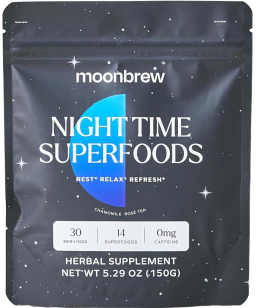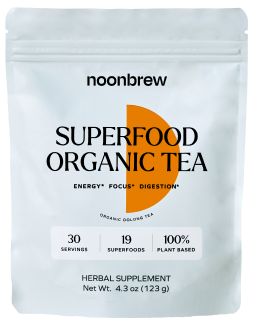Just Pretty or Pretty Tasty? Our Breakdown on Rose Petals
It’s more than a cutesy romantic gift! The rose—one of the oldest and most popular flowers in the world—has a laundry list of uses outside of being a passionate gesture. Don’t overlook the fact that you could consume its petals. They actually have some surprising health benefits. Today we’re going to dive into the rich history of the rose and discover what sort of benefits it can bring to your overall health.

Rose Petals as Medicine: The History
The most common way this flower is enjoyed is through a rose petal tea. This form of tea is thought to have originated in China, where it is an important part of traditional Chinese medicine.[2]
Rose petals can also be used in making rose water, which has cosmetic, culinary and medicinal uses.[3] Rose water has a long history of being used as medicine in Iran and other parts of the Middle East, as far back as the 7th century.[3]
Benefits of Rose Petals
Rose petals have been shown to have many health benefits. They are as follows:
A Wealth of Antioxidants
A 2006 study showed that rose petal tea is rich in antioxidants.[4] These antioxidants help reduce the risk of cancer, heart disease and diabetes.[5] Rose petal tea is particularly rich in a substance known as gallic acid, which is known to have anticancer, anti-inflammatory and analgesic effects.[4]
Rose petal tea is also rich in pigments that improve urinary tract and eye health, memory and also lower the risk of cancer.[4][6]
Menstrual Pain Relief
Rose petal tea has the potential to alleviate menstrual pain, as shown in a study in Taiwan.[7] Two cups of rose petal tea taken daily for 12 days, starting a week before their period, resulted in reduced menstrual pain and better psychological well-being in the participants of the study.[7]
Night Time Superfood Tea
Increase deep sleep; fall asleep faster
A calming and soothing blend of adaptogens with Rose, Chamomile and Magnesium to help you catch the ZzZ’s, and stay asleep*. Sleep tight and wake up refreshed.
Healthy Skin
Rose petal tea is a good source of vitamins E and C, which help promote healthy skin.[2] Rose water, on the other hand, has anti-inflammatory properties which help in the treatment of skin conditions like eczema and rosacea.[3] Rose water also serves as an anti-aging agent by reducing the appearance of wrinkles and lines on the skin.[3]
Immune System Support
The high vitamin C content of rose petal tea makes it beneficial in helping the body’s healing process and its ability to fight off infection.[2]
Other Benefits
Research shows that the aroma of rose petal tea may have the ability to reduce stress and anxiety.[2] It has also been suggested that rose petal tea can improve digestion and prevent constipation.[2]
Rose water, on the other hand, has been shown to be effective in the treatment of sore throat due to its ability to act as a muscle relaxant.[8] Rose water can also be used as an eye drop for conditions like conjunctivitis and dry eyes.[3]
How to Take Rose Petals
Rose petal tea can be prepared using either fresh or dried rose petals. Fresh petals are boiled in water for five minutes, then strained to make tea.
Dried petals are soaked in boiling water for 10 to 20 minutes, before drinking as tea.[1] Dried rose petals can also be eaten, alone or with other foods like yogurt. This is often helpful for improving digestion.[3]
Wind Down In The Evening and Make Your First Rose Tea In 30 Seconds!
As you’ve read today, roses petals have a ton of incredible benefits from being a great source of antioxidants to giving you healthy skin. If you’re ready to take your herbal tea game to the next level, there are many superfoods you could incorporate to maximize your cup’s health benefits. For example, adding chamomile to your rose tea makes it perfect for falling asleep. Add some lavender and it could balance your mood. Now, here’s the kicker. We’ve included rose, chamomile, lavender, and 14 other superfoods into one 30-second night time tea designed to give you the best night of sleep you’ve ever had. It’s called MoonBrew. Give this all natural superfood tea a try today!
Summary
Rose petals are most commonly consumed through herbal teas and rose water. It’s not just a pretty flower but a healing one too. We can all benefit from including more antioxidants into our diet. Whether you’re looking for something to help with menstrual cramps, to boost your immune system, to improve your skin, or to wind down and take some of the stress of the day away, a nice cuppa of rose tea might be just what you’re looking for.
References
- Mandl E. (2019). What is Rose Tea? Benefits and Uses. Healthline. https://www.healthline.com/nutrition/rose-tea#_noHeaderPrefixedContent
- WebMD (2020). Rose Tea: is it good for you? Reviewed by Dan Brennan, MD. Nourish by WebMD.
- Seymour T. (2017). What you should know about rose water. Medical News Today. https://www.medicalnewstoday.com/articles/320216
- Vinokur Y. et al. (2006). Rose petal tea as an antioxidant-rich beverage: cultivar effects. Journal of Food Science. First published: 31 May 2006
- Zhang Y. et al. (2015). Antioxidant phytochemicals for the prevention and treatment of chronic diseases. Molecules. 2015 Nov 27:20(12):21138-556
- Kumar S., Gautam S. and Sharma A. (2013). Identification of antimutagenic properties of anthocyanins and other polyphenols from rose (Rosa centifolia) petals and tea. J Food Sci. 2013 Jun;78(6):H948-54.
- Tseng Y., Chen C. and Yang Y. (2005). Rose tea for relief of primary dysmenorrhea in adolescents: a randomized controlled trial in Taiwan. J Midwifery Womens Health. 2005 Sep-Oct;50(5):e51-7.
- Boskabady M. et al. (2011). Pharmacological effects of rosa damascena. Iran J Basic Med Sci. 2011 Jul;14(4):295-307.





